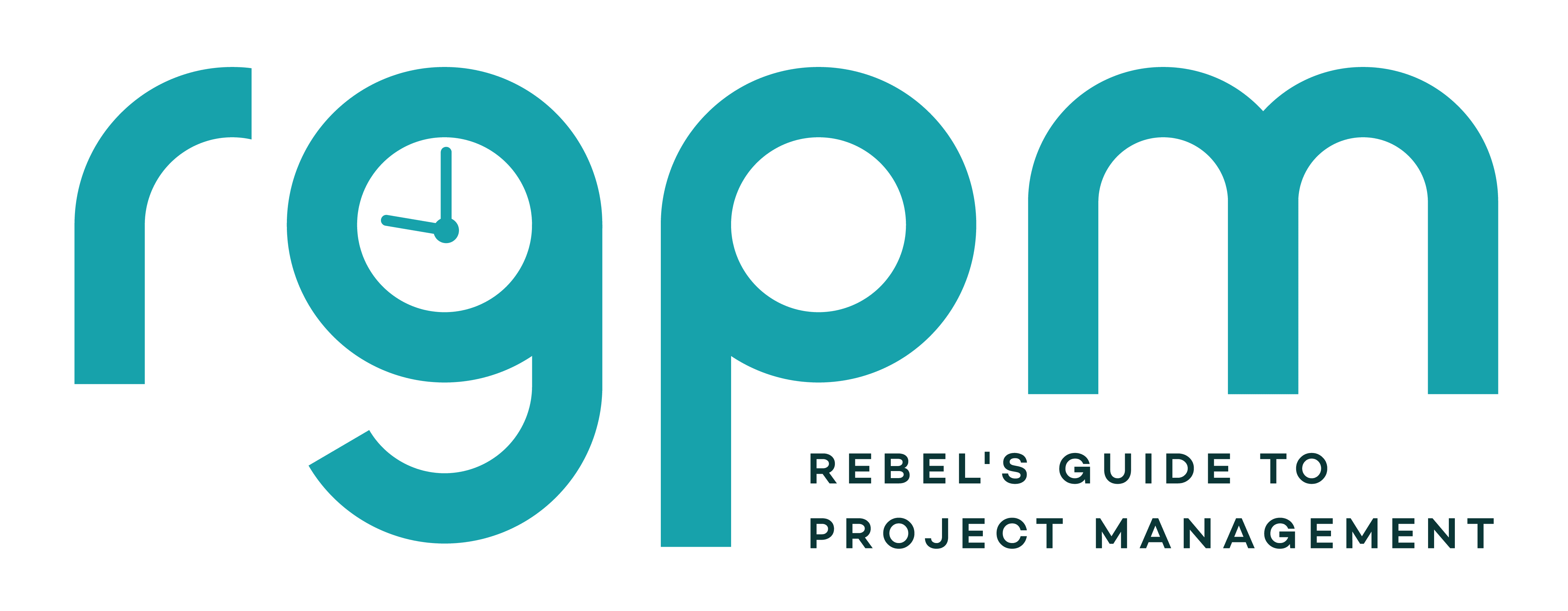Your First PMO Toolkit: The Essentials You Actually Need
So you’ve been asked to set up a Project Management Office. Great! That means your company is moving on and taking project management seriously.
But for you, that means having to pull together assets and processes, standards and approaches, checklists and guidelines… the list goes on.
I can help! If you are setting up a lightweight PMO in a small business or team, and you need structure but not bureaucracy, this is for you.
We’ll cover the templates you need to have in place first, simple processes to kickstart your PMO, the tools that work for small teams and the governance frameworks that will make your life easier without adding bureaucracy.
You’ve got your PMO vision, charter, and buy-in: now it’s time to make it real. But don’t fall into the trap of over-engineering. A lean PMO can start strong with a focused toolkit and just a few essential processes.
Let me show you how.
How to Set up a PMO Series
The first 30 days of your PMO: A week-by-week guide
Your PMO Toolkit: The essentials you actually need to set up a PMO
12-step checklist for setting up a PMO
How to write a PMO mission statement
How to structure and staff your PMO (without a big budget)
PMO tools that increase productivity
If you start looking for project management software, you’ll see there are literally hundreds of tools you can get.
The best project management software for small teams is going to be the product that works with the way your team works. You can consider options like Trello, Asana, Monday.com and Smartsheet, Microsoft Planner, Notion and more. Look for lightweight PMO software designed for small businesses.
My top tip is to work out what you want the tool to do for you before you invest in software. You absolutely need to have requirements before you shop around. You’re looking for affordable project planning software, so have a budget in mind as well.
And when you are ready to shop around, save yourself some time and go with a service like Crozdesk where you can speak to a human and have them recommend tools that are a fit for your needs based on your requirements.
Get fast & free advice from the experts at Crozdesk.com. Crozdesk's small team of dedicated Project Management software enthusiasts will compare 360+ products for you. Tell them your requirements and they'll match you with the right expert who can help.
- No Obligations
- Free Service
- Exclusive Discounts
- Expert Advice
- Minimal Time Commitment
- Get a Custom Comparison Report
I use Infinity for project planning and task management,
The 5 templates you need on day one
OK, before we get started on this, I need to say that the project management documents you decide to make available as part of your PMO do very much depend on what your PMO’s goals are.
For the purposes of this article, I’m assuming your PMO is going to be set up to standardize the approach to project management and to bring a bit of rigour and governance to the way projects are delivered.
If your PMO is focusing on other goals, then you’ll need different templates to the ones I’ve called out below. Having said that, these templates are still good to have as they mean projects have a little scaffolding!

Free project management templates
I have a library of free project management templates including documents that you’d commonly want project teams to be using. Sign up for free access to that here.
I also have premium templates available, which are more suitable for a professional PMO, and the relevant ones are linked in the article below.
1. Project Brief Template (or Project Charter)
- Captures the why, what, who, and how of each project, and success criteria
- Helps standardize approvals
- Create an editable file with sections for objectives, timeline, budget, risks
- Use mine!
Project managers will complete this. In theory, it should be the project sponsor or business owner, but in reality I’ve rarely seen that happen – it always falls to the project manager!
This can include some project plan elements to save on needing separate project plans for each project. Remember, technically, a project plan talks about how the project will be run, and a project schedule is the timeline, although you’ll often hear people talking about the plan when they mean the schedule.
2. Status Report Template
- One-pager: Red-Amber-Green summary, key updates, blockers
- Weekly or biweekly cadence
- Ideal for leadership reporting
- Use my status report template!
You can use the status reports individually to create portfolio reporting. Ideally, you’d have this via a project management tool so you don’t have to manually copy/paste info from various slides or spreadsheets.
3. RAID Log
- Risks, Assumptions, Issues, Dependencies
- Central tracking across all projects
- Use my RAID log Excel template
4. Action Log
- Simple running list of who owes what by when
- Great for PMs and team leads
- Use my action log (it’s in the RAID spreadsheet template)
You can have (and should have) an action log for the PMO as well, to track all the tasks you are doing to set up and embed standard ways of working. Setting up a PMO is a project, just like any other project!
5. Lessons Learned Log
- Start collecting insights from the first project
- Encourage a culture of reflection and improvement
- Use mine!
Again, while you’re going to make this template available to other projects through your PMO library, you’d also want to have one of your own for your ‘PMO set up project’. Keep a list of all the things you want to do differently or enhancements you want to make.
Creating your template library
Over time, you’ll add more and more actionable templates to your repository. You can get granular and include things like project requirements, RACI, project scope, risk management extras.
Stick to templates that you know people are asking for. Where you’ve got examples from previous projects (and they’re good enough) use those as a starting point, or check out my library of best practice project documentation.
3 Simple processes to get things done
Your PMO will end up leading on many processes to do with how projects are initiated, prioritized, delivered and closed. But when you’re starting out, you can’t do it all.
Here are three simple processes you can launch when you kick off the PMO to help project teams manage their work.
1. Project Initiation
- Use the Project Brief
- Set up a folder, assign roles
- Review this project initiation checklist template for more ideas
The kick off, onboarding, initiation, intake, whatever you want to call it process, is one of the most important ones to set up at the beginning.
It controls the flow of work coming into teams and helps them prioritize what they should be working on. You’ll want to align incoming work to strategic objectives to help teams with resource allocation and planning.
This process will also help you flag project dependencies, for example if one project has to finish before another one can start.
2. Status Reporting
- Agree frequency and content
- Establish reporting line (to PMO or sponsor or both!)
The status reporting process is another one to get in place as soon as you can. You might not need every project to turn in a status report, but the big ones that have strategic significance, or that are overspending, or that are for a ‘special’ client – those are the ones to focus on first.
Look at previous projects and use good practice reports as examples.
3. Change Control
- Don’t overdo it, a project change control log or decision log works fine for now
- Use a single-page, simple change request doc in Word
- Use my change management documents.
Changes cost money, use more resource, eat away at benefits and add more time. So you want to make sure these are controlled and the impacts understood.
Getting a change control process in place helps manage scope creep, keeps projects under control and helps make faster decisions. Create a
Keep it scalable
Add time tracking, benefits tracking, or stage gates later only if needed.
There are lots more processes you can add over time. Listen out for what people are asking for and prioritize those. That way you can meet a demand and add real value early on.
Governance without the guff
You need to have a project governance framework for your organization. Whether you’re looking for lean project management for startups or trying to establish governance in a larger, more mature organization, there needs to be some way of making decisions and holding people accountable.
However, you don’t need a 20-page PM framework, especially as you are bringing your own project management expertise to the show. Instead:
- Define when a project is a “project” (vs. BAU)
- Set minimum standards for:
- Project startup (use the brief)
- Status reporting
- Risk tracking
- Project closure
Create a 1-page governance cheat sheet as part of your toolkit for the PMO that lets projects teams know what reporting is expected. Do they need to have a steering group? Are there approval points? What business case is required? Who signs off what?
When those basics are clear, projects will move more quickly through delivery.
Build now, refine later
This project management office toolkit gives you structure without stalling delivery. Start small, make it visible, and evolve based on feedback. You want sustainable business performance, not a big spike of activity at the beginning followed by the slow lingering death of being ignored by the rest of the business!

